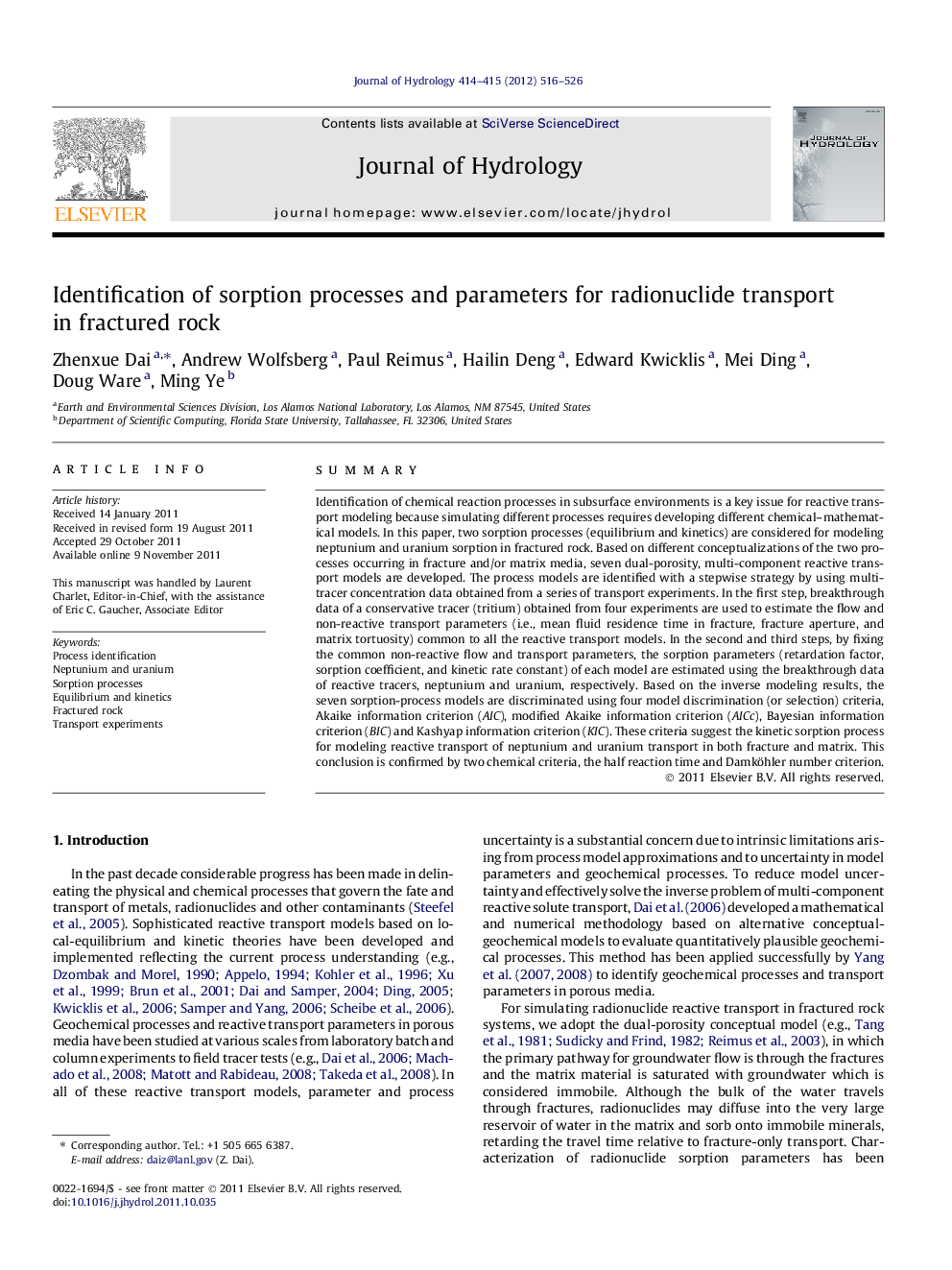| Article ID | Journal | Published Year | Pages | File Type |
|---|---|---|---|---|
| 4577223 | Journal of Hydrology | 2012 | 11 Pages |
SummaryIdentification of chemical reaction processes in subsurface environments is a key issue for reactive transport modeling because simulating different processes requires developing different chemical–mathematical models. In this paper, two sorption processes (equilibrium and kinetics) are considered for modeling neptunium and uranium sorption in fractured rock. Based on different conceptualizations of the two processes occurring in fracture and/or matrix media, seven dual-porosity, multi-component reactive transport models are developed. The process models are identified with a stepwise strategy by using multi-tracer concentration data obtained from a series of transport experiments. In the first step, breakthrough data of a conservative tracer (tritium) obtained from four experiments are used to estimate the flow and non-reactive transport parameters (i.e., mean fluid residence time in fracture, fracture aperture, and matrix tortuosity) common to all the reactive transport models. In the second and third steps, by fixing the common non-reactive flow and transport parameters, the sorption parameters (retardation factor, sorption coefficient, and kinetic rate constant) of each model are estimated using the breakthrough data of reactive tracers, neptunium and uranium, respectively. Based on the inverse modeling results, the seven sorption-process models are discriminated using four model discrimination (or selection) criteria, Akaike information criterion (AIC), modified Akaike information criterion (AICc), Bayesian information criterion (BIC) and Kashyap information criterion (KIC). These criteria suggest the kinetic sorption process for modeling reactive transport of neptunium and uranium transport in both fracture and matrix. This conclusion is confirmed by two chemical criteria, the half reaction time and Damköhler number criterion.
► Developing different conceptualizations of the sorption processes. ► Modeling neptunium and uranium transport and sorption in fractured rock. ► Estimating the flow and reactive transport parameters. ► Identifying sorption processes with four model discrimination criteria.
